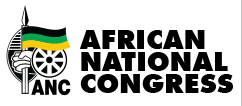Defiance Campaign
The Story of Defiance
- Henry Nxumalo
- 30 October 1952
On 6 April 1952, exactly 300 years after Van Riebeeck and the first white settlers landed at the Cape, the first mass demonstrations were held in Red Square, Fordsburg, Johannesburg (now called Freedom Square), and the other main centres of the Union. Units marched into Freedom Square from the locations and outlying towns. The meeting was addressed by the ANC and SAIC presidents, Dr Moroka and Dr Dadoo, and many other African, Indian and coloured leaders. They protested against the `oppressive measures` and called for 10,000 volunteers to defy the laws.
The date fixed for the first defiance of the laws was 26 June, commemorating the protest strike by non-whites two years ago against living conditions. But the first actual cases of defiance, as it happened, occurred before that. On 10 May the government, under the Suppression of Communism Act, called on four `named` non-white ex-communists to resign from all organisations: Dadoo, Marks, Bopape and Kotane. All four leaders were closely involved in the Defiance Campaign, and both Dadoo and Marks were members of the original Joint Planning Council.
The four leaders defied the order from the Minister of justice, and continued to address meetings. With others, they were each in turn arrested. On 9 June the `named` non-white leaders who had defied the ban came before the Magistrate`s Court in Johannesburg. The week of the trial -or `Leaders Week`, as it was called – was the occasion for more protest, with crowds squeezing in and around the courts, and volunteers signing on in hundreds. All over the Union, in the towns and in the locations, the leaders made speeches for the campaign. The four principal banned leaders, together with the others, were found guilty. They were sentenced to between four and six months` imprisonment. They were granted leave to appeal and await a second trial.
In the meantime, volunteers were enlisted from all parts of the Union and from all the non-white groups to take part in acts of defiance. Men and women from all walks of life signed on, to be later organised into batches to defy the laws together.
On 26 June bands of volunteers went into- action for the first time. Without violence or disorder, a small group led by Nana Sita, an old-stager of passive resistance, insisted on entering Boksburg location, close to Johannesburg, without the necessary permits. After arguments with the police, they were arrested and, without resistance, entered the police lorry which took them to gaol. The first group was shortly followed by others, and Walter Sisulu, Secretary-General of the ANC, was one of the leaders arrested.
On the same evening a meeting was held at the Garment Workers` Hall in Anderson Street, Johannesburg. After the meeting, attended by picked bands of volunteers and a number of pressmen, a group of Africans left the building after the official curfew time. They came into the street to find a row of armed police lining the street on both sides. After brief questioning by the police chief, the group was arrested and, singing `Afrika` and with thumbs uplifted to the `Afrika` sign, they climbed into the waiting lorry. With them to the gaol went defiance leaders Yusuf Cachalia and Nelson Mandela.
The first groups of Defiers came up before the magistrate and were sentenced to periods from four to six weeks, with option of a fine. The fine was refused, and the Defiers served their full sentences. This was the pattern of all the defiance groups which followed. There was no violence, no resistance to arrest. The groups marched off and were taken to the gaol without incident.
